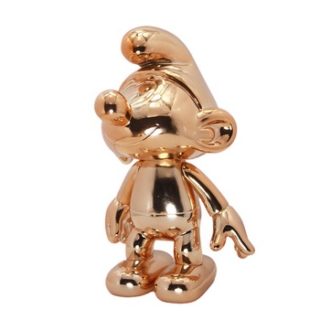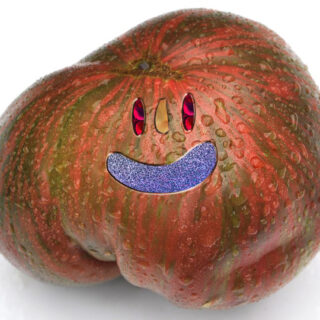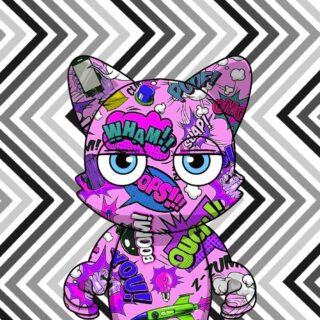| Description | | The artist had a totally original perception of landscape. He successfully synthesizes seemingly incongruent aspects into a singularly distinctive style: a style, which is at once mysterious, primitive, disciplined, moody and nostalgic. He captures the grandeur of simplicity of the American countryside, and represents these glimpses of the American scene with a direct lyric ardor. His landscapes are remarkable for their suggestion of distances, landmasses and weather moods. The artist is constantly and everlastingly overwhelmed at the stupendous infinity of Nature. Wherever he turns and looks, there I see creation. Art is creating. Art is the search for truth. | The term 'bokeh' comes from the Japanese word, 'boke', which means 'haze' or 'blur'. The word has come to be widely associated with the aesthetic quality of out-of-focus blur in a piece of art. Blurring is a nifty effect in painting. It can make the painted image look as if it's like a fast-motion photograph and imply rapid movement. A computer-generated simulacrum of reflections from the silicon dioxide found in insects' shells. The compound is a prime ingredient of window glass and fibre-optic cable; a semi-conductor, it's also a mainstay of computer chips. The article accompanying the source photo described research being conducted into structural colours – that is, colours that result from surface textures that refract, rather than contain, pigment. What seems, at first glance, an op art abstraction thus turns out, when unpacked, to contain an entire disquisition on the meshing of the "natural" world (insects) with its synthetic reproductions both inherent (shell-reflections) and exterior (scientific visual modelling); on the surfaces through which we look (windows) and vectors along which we relay or broadcast information (cables); on digital technology; and on colour and its spectrum – which, of course, means both on painting and on light itself, the very ground and possibility of vision. | Welcome! Presenting mid 20th century modern impressionist New York cityscape, Cityscape painting flourished after World War II, already appearing in the repertory of abstract expressionist painters, for example in “City landscape” by Joan Mitchell (1955, Art Institute of Chicago) or in some audacious pictorial experiments by Willem de Kooning. On the way to abstraction we find the figure of Piet Mondrian, who, after emigrating to the United States, created his original visions of New York City, among them the famous “Broadway Boogie Woogie” (1942-43, New York, MOMA) , which the painter Robert Motherwell described with these words: “The Modern City! Precise, rectangular, squared, whether seen from above, below, or on the side; bright lights and sterilized life; Broadway, whites and blacks; and boogie-woogie; the underground music of the at once resigned and rebellious”. | Why does Leonardo da Vinci continue to have such a hold on our imaginations? Perhaps part of his attraction is that he seems to perfectly exemplify the popular notion of the Renaissance Man. How extraordinary, we think, that he was an inventor, a portrait painter, an anatomist and a botanist, artist and scientist. At least two things are wrong with this notion. One, he was not alone in his multifaceted abilities; it was more common for an artist of his time to undertake at least two or three of these endeavors than it was to specialize in one. But just as important, art and science during the Renaissance were not separated by the chasm that they are now. “A Portrait of the Artist as a Shadow of His Former Self,” Kerry James Marshall . The two most common lighting conditions when painting outside are direct sunlight and a cloudy sky and both influence the qualities of the cast shadow edge. Direct sunlight gives us a hard light source that creates clearly visible shadows and produces a hard crisp edge to the cast shadows. A cloudy sky gives us a soft light source which gives much subtler shadows with soft blurry edges. | In the squeegee technique, the use of oil paint is most common. Oil paint is based on hardened oils, in most cases, linseed oil. Oil paints have ratings for lightfastness and opacity. The thickness of such paint is a little bit higher than that of toothpaste. One reason why oil paint is so well suited for this painting technique is that the drying time is longer than acrylic paint. This means that even large formats can be squeezed without having to rush the process. Acrylic paint, in its basic composition, is only sub optimally suitable for squeegee painting, as it usually begins to dry and harden within a few minutes. If you wish, you can extend its drying time by adding a drying retarder and binding medium. The resulting acrylic-based mixture can be used without almost in the same approach as oil-based color. |
| Content | | The artist had a totally original perception of landscape. He successfully synthesizes seemingly incongruent aspects into a singularly distinctive style: a style, which is at once mysterious, primitive, disciplined, moody and nostalgic. He captures the grandeur of simplicity of the American countryside, and represents these glimpses of the American scene with a direct lyric ardor. His landscapes are remarkable for their suggestion of distances, landmasses and weather moods. The artist is constantly and everlastingly overwhelmed at the stupendous infinity of Nature. Wherever he turns and looks, there I see creation. Art is creating. Art is the search for truth. | The term 'bokeh' comes from the Japanese word, 'boke', which means 'haze' or 'blur'. The word has come to be widely associated with the aesthetic quality of out-of-focus blur in a piece of art. Blurring is a nifty effect in painting. It can make the painted image look as if it's like a fast-motion photograph and imply rapid movement. A computer-generated simulacrum of reflections from the silicon dioxide found in insects' shells. The compound is a prime ingredient of window glass and fibre-optic cable; a semi-conductor, it's also a mainstay of computer chips. The article accompanying the source photo described research being conducted into structural colours – that is, colours that result from surface textures that refract, rather than contain, pigment. What seems, at first glance, an op art abstraction thus turns out, when unpacked, to contain an entire disquisition on the meshing of the "natural" world (insects) with its synthetic reproductions both inherent (shell-reflections) and exterior (scientific visual modelling); on the surfaces through which we look (windows) and vectors along which we relay or broadcast information (cables); on digital technology; and on colour and its spectrum – which, of course, means both on painting and on light itself, the very ground and possibility of vision. | Welcome! Presenting mid 20th century modern impressionist New York cityscape, Cityscape painting flourished after World War II, already appearing in the repertory of abstract expressionist painters, for example in “City landscape” by Joan Mitchell (1955, Art Institute of Chicago) or in some audacious pictorial experiments by Willem de Kooning. On the way to abstraction we find the figure of Piet Mondrian, who, after emigrating to the United States, created his original visions of New York City, among them the famous “Broadway Boogie Woogie” (1942-43, New York, MOMA) , which the painter Robert Motherwell described with these words: “The Modern City! Precise, rectangular, squared, whether seen from above, below, or on the side; bright lights and sterilized life; Broadway, whites and blacks; and boogie-woogie; the underground music of the at once resigned and rebellious”. | Why does Leonardo da Vinci continue to have such a hold on our imaginations? Perhaps part of his attraction is that he seems to perfectly exemplify the popular notion of the Renaissance Man. How extraordinary, we think, that he was an inventor, a portrait painter, an anatomist and a botanist, artist and scientist. At least two things are wrong with this notion. One, he was not alone in his multifaceted abilities; it was more common for an artist of his time to undertake at least two or three of these endeavors than it was to specialize in one. But just as important, art and science during the Renaissance were not separated by the chasm that they are now. “A Portrait of the Artist as a Shadow of His Former Self,” Kerry James Marshall . The two most common lighting conditions when painting outside are direct sunlight and a cloudy sky and both influence the qualities of the cast shadow edge. Direct sunlight gives us a hard light source that creates clearly visible shadows and produces a hard crisp edge to the cast shadows. A cloudy sky gives us a soft light source which gives much subtler shadows with soft blurry edges. | In the squeegee technique, the use of oil paint is most common. Oil paint is based on hardened oils, in most cases, linseed oil. Oil paints have ratings for lightfastness and opacity. The thickness of such paint is a little bit higher than that of toothpaste. One reason why oil paint is so well suited for this painting technique is that the drying time is longer than acrylic paint. This means that even large formats can be squeezed without having to rush the process. Acrylic paint, in its basic composition, is only sub optimally suitable for squeegee painting, as it usually begins to dry and harden within a few minutes. If you wish, you can extend its drying time by adding a drying retarder and binding medium. The resulting acrylic-based mixture can be used without almost in the same approach as oil-based color. |







 Blockchain 360: A State of the Art for Professionals
Blockchain 360: A State of the Art for Professionals  Blockchain for Business
Blockchain for Business 














Reviews
There are no reviews yet.